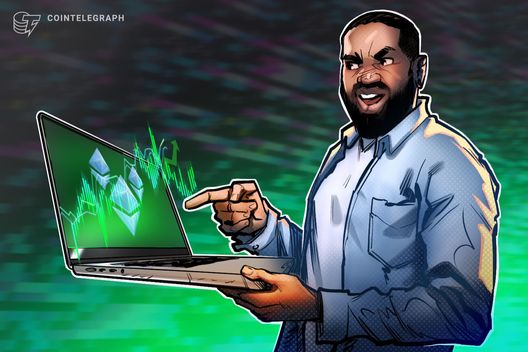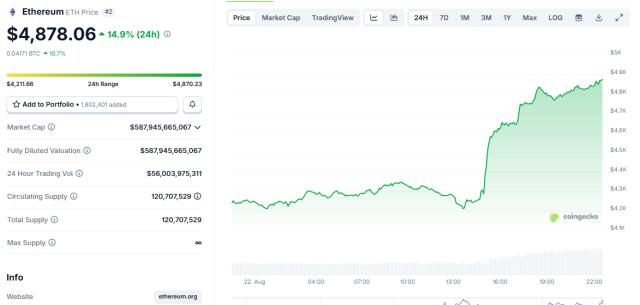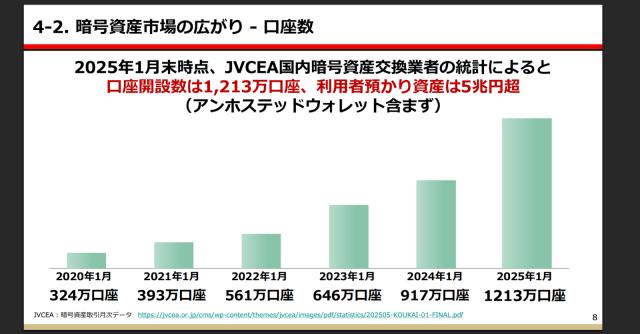Source: Daewoo
World Liberty Financial (WLFI) A crypto-finance project co-founded by the Trump family, it aims to promote decentralized finance and the USD1 stablecoin . Trump himself serves as "Chief Crypto Advocate," and family members such as his son Eric, Donald Trump Jr., and Barron Trump also support the team .
The project was launched in September 2024 and conducted two rounds of WLFI token public sales:
The first round sold 20 billion WLFI at a price of $0.015 in October 2024, raising approximately $300 million ;
The second round sold 5 billion coins at a price of $0.05 in January 2025, raising $250 million .
The two rounds of financing raised a total of approximately $550 million, demonstrating the market's high interest in the project. In his 2025 financial disclosure, Trump claimed to have profited $57.355 million from the WLFI token sale and held 15.75 billion WLFI governance tokens. Well-known investors also participated, such as Tron founder Justin Sun, who spent $30 million to purchase 2 billion WLFI tokens . Notably, the WLFI white paper initially designated the tokens as non-tradable , used only for governance voting, and explicitly prohibited from sale to U.S. persons to avoid being deemed a securities offering by the SEC . This cautious design reflects the project's concern for compliance risks.
Token distribution and economic model:
The total amount of WLFI tokens is 100 billion .
The token distribution structure is as follows : 35% (35 billion) will be used for public sales, 32.5% (32.5 billion) will be used for community incentives, 30% (30 billion) will be awarded to initial backers (including the Trump family and other founders), and 2.5% (2.5 billion) will be allocated to the team and advisors. Because tokens are initially non-transferable, holders only have voting rights in governance and do not directly share in the project's profits. Instead, token sale proceeds and platform profits will be distributed to several entities affiliated with the Trump family after deducting operating costs .
In other words, purchasing WLFI primarily grants participants voting rights, while actual profits primarily accrue to the project's founding team and backers . This economic model has raised questions within the community about the token's ability to capture value: the WLFI governance token is disconnected from the value of the project's core business (the USD1 stablecoin), and the token itself lacks direct revenue returns . Investors should be wary of the potential risk of this model of "raising capital without sharing profits."
WLFI 's market performance after coin issuance
Trading unlock and buying support: Although WLFI launched in 2024, the tokens were initially locked in user wallets for nearly a year and could not be traded. The community strongly advocated for open trading, with discussions focusing on the question of when buying and selling would be permitted . In July 2025, the WLFI team initiated a voting proposal to allow the token to circulate on the secondary market. The proposal passed with an overwhelming 99.94% approval rate .
According to the plan, WLFI token trading will open on September 1st . Initially, only 20% of the tokens held by early supporters will be unlocked for circulation. The unlocking schedule for the remaining tokens will be determined by a second community vote . Tokens held by the founders, team, and advisors will remain locked up for the long term, with specific timing and conditions to be determined . This gradual unlocking strategy will help avoid excessive selling pressure all at once. However, even if only 20% is unlocked, based on the total 25 billion tokens in the public sale, approximately 5 billion WLFI will enter the market. Whether there will be sufficient buying to offset this selling pressure will be a key market concern.
Price trends and trading activity: Before its official listing, WLFI was already trading in the pre-market, reflecting a certain level of speculative enthusiasm. Data shows that in mid-July, the over-the-counter price of WLFI reached $0.188, a 40.3% increase in 24 hours . This was significantly higher than the second round of public offering price of $0.05, indicating significant paper profits for early investors. However, market opinion on WLFI's pricing was sharply divided: rumors circulated that WLFI's pre-market price had reached as high as $0.30, while professional over-the-counter trading desks were offering quotes of no more than $0.04 .
In other words, retail investor sentiment has driven WLFI's expected price to six times the public offering price, while rational institutional buyers are willing to enter the market at less than double the public offering price. This price gap highlights the heavy influence of short-term speculation in the market, and buying power may not be as solid as it appears . The high price of $0.30 in pre-market trading, which lacks real liquidity , is more a reflection of fear of loss (FOMO) than of real capital investment. Once WLFI is listed on the exchange, if buying is insufficient, the price may fall back to a level closer to rational over-the-counter quotes.
Community popularity and market sentiment: WLFI has generated significant traffic since its launch thanks to Trump's endorsement. The project has garnered significant attention from Trump supporters and the crypto community. The initial $200 million in WLFI tokens were quickly snapped up shortly after their official launch. Reportedly driven by the Trump meme coin craze, the "2 billion WLFI public sale quickly sold out, raising $300 million . "
Discussions surrounding WLFI remain intense on social media platforms . Positive factors include: Trump's political influence has provided the project with unique resources (for example, Abu Dhabi investment firm MGX reportedly invested $2 billion in Binance via the USD1 stablecoin, making Binance the largest holder of USD1 and boosting USD1 issuance by nearly $2 billion overnight ). This type of political-business collaboration has heightened market speculation about WLFI's prospects . Negative factors include: some analysts question whether WLFI is merely another ploy by the Trump family to enrich themselves, fearing its operations and sell-offs could be as ruthless as those of the Trump token and NFTs . Furthermore , since the initial white paper stated that the tokens might never be traded, opening them for trading now would be seen as a concession to profit , potentially raising concerns about trust. Overall, sentiment in the WLFI community is polarized: supporters anticipate a surge in price due to the token unlock, while rational voices caution against blindly following trends and remain wary of excessive cashing out by the project's owners.
Competitive comparison: WLFI is in a unique field, with both the halo of "political support" and involvement in stablecoins and DeFi businesses. There are not many comparable projects, but it can still be compared from two categories of competing products :
The first is traditional stablecoins and related platforms , such as USDT/USDC issued by Tether or Circle and their equity value;
The second is similar political theme tokens , the most typical of which is Trump’s personal meme coin TRUMP. Using a valuation anchoring method based on the market capitalization/stablecoin size ratio of Circle, the leading stablecoin, WLFI tokens could be reasonably valued at approximately $1.5 billion, corresponding to a price of approximately $0.015 per token . This valuation is comparable to the public offering price and significantly lower than market speculation, demonstrating that WLFI is not cheap from a fundamental perspective. However, investors have clearly placed a significant premium on the project, likely due to high expectations for the "Trump effect ," perceived network effects from the stablecoin business, and the perceived scarcity of the "first presidential crypto project."
Furthermore, regarding politically themed coins, several memecoins have emerged since the end of 2024, including "TRUMP Coin" and its imitators, "MAGA Coin" and "FIGHT Coin." When the Trump token skyrocketed, other Altcoin with similar themes followed suit, resulting in divergent trends such as "MAGA plummeted 32% while FIGHT surged 40% ." Earlier this year, even derivative memecoins, such as "First Lady Coin," saw rapid gains and subsequent declines, highlighting the speculative nature and high risk of political memecoins .
Unlike memecoin , which is primarily a gambling platform , WLFI boasts real business support (stablecoin and DeFi platform). Therefore, its performance will depend on whether speculative enthusiasm can be converted into long-term users and profits. Whether WLFI can prove itself as "not the next political Altcoin to be exploited" and gain a firm foothold in the competition remains to be seen.
Analysis of WLFI price increase expectations
Considering these factors, there's significant uncertainty surrounding WLFI's price trajectory after its launch. The current gray market price (approximately $0.18-$0.23) already represents a significant premium over the average price of the second round of public offerings . Some optimists believe that the initial supply will be small, potentially leading to a supply shortage and driving up prices. Some predict that the initial launch price of WLFI could reach between $0.50 and $1.50 .
If this is true, the returns for early adopters will be substantial. However, more cautious analysis points out that the initial circulating market capitalization is not low . Assuming an opening price of $0.20 and unlocking 500 million (20% * 2.5 billion) tokens for circulation, the initial market capitalization is approximately $1 billion. This scale is already huge among Altcoin, and continued exponential growth requires a steady stream of new funds. Factors that need to be weighed include:
Project Fundamentals : Currently, demand for WLFI's core USD1 stablecoin remains limited. Prior to May, the circulating supply was only approximately $130 million, and it only reached $2.2 billion thanks to a single capital injection . Without new business growth drivers, the inflated token valuation will be difficult to sustain in the long term.
Unlocking and Selling Pressure : In addition to the initial 20%, a further 80% of tokens will be unlocked in the future. The gradual sale of the large number of tokens held by the founding team and initial supporters will create sustained selling pressure. Community investors are closely watching the unlocking progress. If the project fails to properly extend the lock-up period or introduce favorable hedging measures, the risk of a subsequent sell-off after a significant surge in price cannot be ignored .
Market Environment : If the overall crypto market continues its bull run in 2025, ample capital and rising risk appetite could provide a catalyst for WLFI's upward movement. Conversely, if the market weakens or investor risk appetite declines, theme-driven tokens like WLFI are prone to experiencing price increases followed by declines.
Politics and Public Opinion : Trump's return to the White House provides WLFI with a unique publicity boost, but it also attracts increased public scrutiny and ethical controversy. Any negative news (such as regulatory investigations or false project claims) could quickly reverse market sentiment. As analysts have noted, the Trump family has numerous avenues for accumulating wealth across various sectors, and WLFI may not be their primary long-term investment . If investors perceive the project as merely capitalizing on the power of political celebrity, their confidence will be significantly diminished.
In summary, the upper limit of WLFI's short-term increase depends on the intensity of market sentiment speculation :
In an extremely optimistic scenario, a surge in the token price, several times the public offering price, is possible. However, the medium- to long-term trend will ultimately return to value . If the project fails to deliver on its promise (e.g., DeFi products are delayed in launching, stablecoins lack real-world applications), the token price may struggle to maintain its high level for long. When evaluating WLFI's expected price increase, the risk of a mismatch between its fundamentals and secondary market sentiment should be fully considered to avoid becoming the last buyer.
As one senior trader lamented about WLFI’s high pre-market price: “ What narrative can support a 7.5x price difference? ” - Investors should remain calm and measure the true value of tokens based on fundamentals and funding conditions.






